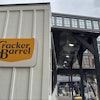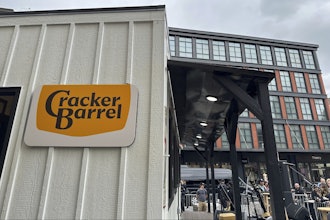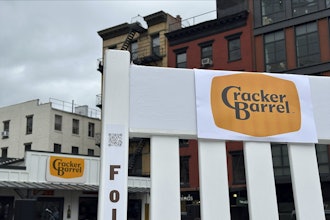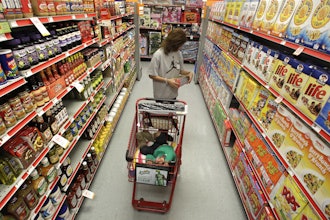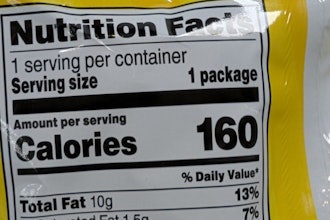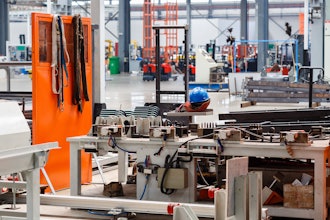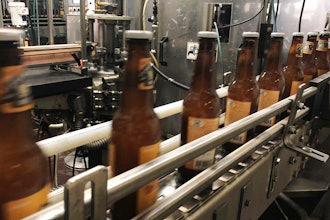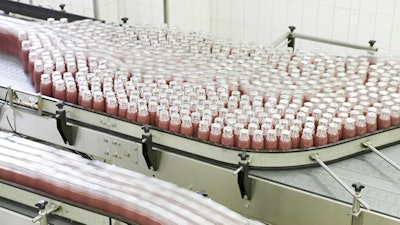
The US Food and Drug Administration (FDA) recently finalized a new definition for “healthy” claims on food labels, effective April 28, 2025, with a compliance date of February 25, 2028. Companies making food products must include recommended food groups and meet limits for saturated fat, sodium, and added sugars.
In addition to the new definition of “healthy”, the FDA proposed the front-of-package (FOP) “Nutrition Info box” to show if a product has low, medium, or high levels of key nutrients. If finalized, most manufacturers would have three to four years to comply with the proposal.
The goal of these two strategies is to create an opportunity for food manufacturers to meet the growing customer demand of transparency, and it’s an opportunity for companies to revalue their labeling to keep up with the growing demand of regulations.
How to start preparing for the food labeling changes
In our previous article, Preparing for the FDA’s Healthy & Front of Package Food Labeling Rules, we walked through the process of when and how to start preparing for the food labeling changes. The three questions to ask yourself to see if your labeling is ready for the food labeling changes.
Our previous article then explained how to modernize your labeling for future and upcoming rules. After establishing your labeling system needs to be modernized, due to manual errors, poor label quality, or process inefficiencies, that’s when you can look into specific solutions and the software that will best suit your company. Most companies will consider print automation as an option for their labeling.
What is label printing automation and why can it help companies in the food & beverage industry meet new regulatory strategies
What type of company is the most efficient? The one where users never have to touch the labeling software at all. With automated label printing, the whole labeling process runs in the background—it's fast, accurate, and invisible to the end user. How does it work? Let's get into it and see how it will help food manufacturers.
Print automation replaces the manual task of creating and printing a label with an automated process that is faster and more efficient. The goal of print automation is to minimize touch points within the labeling process by reducing errors with human interaction. Some of the key benefits of print automation for compliance are:
Faster label print: When labeling requirements change due to new regulations, automation enables changes to be made through your labeling environment. If you update your label templates, a print automation solution will apply it to all your labels and continue printing the labels as normal.
Accurate labels: Labels must be accurate to give customers the transparency and trust they want in a brand. Using print automation software, you can initiate label print jobs based on actions in your business systems—such as releasing a work order, updating a status, or clicking a button on the user interface.
User-free process: Compliance doesn’t have to mean complexity. With automation, the labeling process happens behind the scenes. Production teams don’t need to learn new software—labels just print correctly, every time, across all locations.
Traceability: Automated labeling systems can generate and print variable data such as lot numbers, expiration dates, batch codes, and origin information—all pulled directly from your ERP or WMS systems. This ensures every label contains the right information without manual data entry. In the event of a recall, you can quickly trace affected products and prove compliance with required documentation.
As the FDA continues to prioritize transparency and nutrition disclosure, companies that embrace automation will be better prepared to implement label updates quickly and confidently. Automation provides the ability to respond to regulatory changes, reducing the risk of delays or production errors—all without slowing down production or risking noncompliance.
Added benefits of print automation beyond compliance standards
While compliance is often the reason companies modernize their labeling system, print automation also gives companies more added benefits, such as:
- Improved Return on Investment (ROI): With ongoing tariffs uncertainty and growing concerns on how to save money, integrating your labeling system helps expand ROI by leveraging existing business systems, rather than allocating budget to a new solution.
- More user-friendly label printing process: Reduce stress and save time by eliminating unnecessary steps in the labeling environment to create a simpler labeling process for your print users.
- Reduced IT interaction: Little to no maintenance is required once print automation software is configured with your system.
- Centrally managed print jobs: Using print automation you can control all your print jobs from a centralized location. Easily manage multiple workstations from the comfort of your desk.
- Scalability: As your business grows, an automated label printing system supports increased demand without requiring additional resources. This scalability makes print automation a future-proof investment.
Real-life food redistributor success story
Dot Foods is the largest food industry redistributor in North America. They’ve been helping companies move food products more efficiently and cost-effectively from manufacturer to distributor since 1960. Headquartered in Illinois, Dot Foods serves over 1,100 food manufacturers across North America. As Dot Foods grew, their labeling needs did as well.
Dot Foods chose an automated label printing solution that was able to help them maintain their high availability environment. By implementing automation, Dot Foods was able to improve labeling accuracy to 99%, stay compliant with internal security standards, and instantaneously send print jobs to more than 300 printers across their 14 distribution centers.
Read the full Dot Foods success story.
How to get started with a smarter labeling process and one that will set your company up for success
Switching from your current labeling system to automation doesn't have to be a complete overhaul, here’s how to get started:
- Audit your current labeling environment
- Select a reliable labeling provider with print automation
- Use universal, low-code integration to trigger label printing from a simple database record or flat file
- Make sure your hardware is compatible with your software
- Choose a labeling provider with reliable customer support
Automation gives food manufacturers the ability to stay compliant, improve speed, and increase accuracy.
As FDA labeling requirements continue to evolve, manual processes are no longer enough to meet the pace and precision needed in food manufacturing. Modernizing your labeling with print automation not only ensures compliance with changing industry standards but also gives you peace of mind that your labels will be accurate, efficient, and ready for what’s next.
To explore how automation can benefit your company, collaborate with a labeling provider and your IT/operations team to identify areas where improvements can be made throughout your labeling process.
Jenna Wagner is the Global Marketing Director at Teklynx International.


